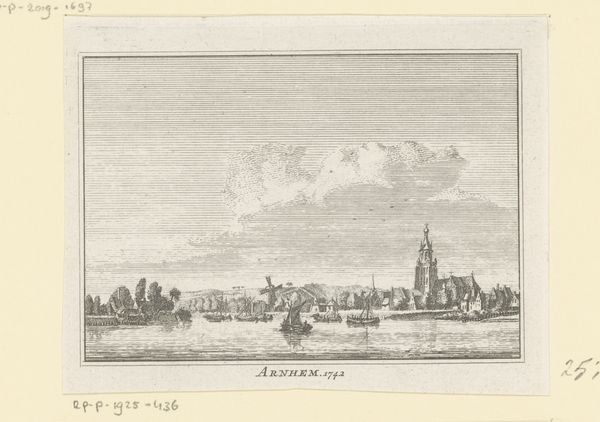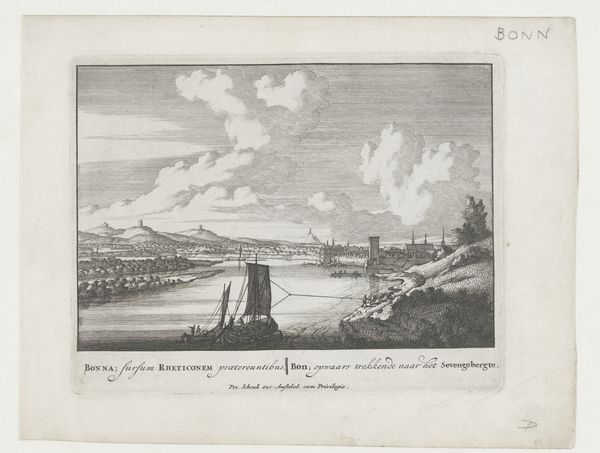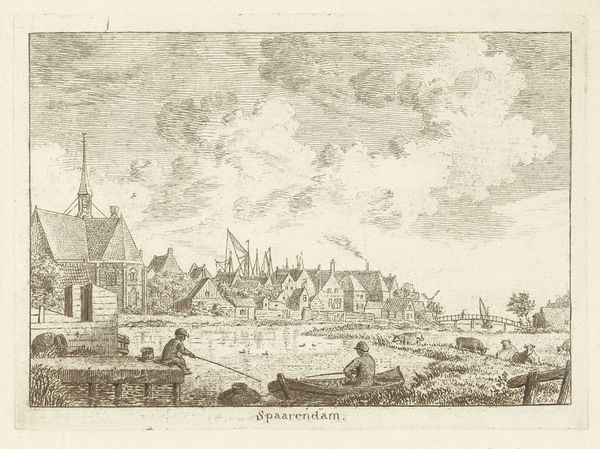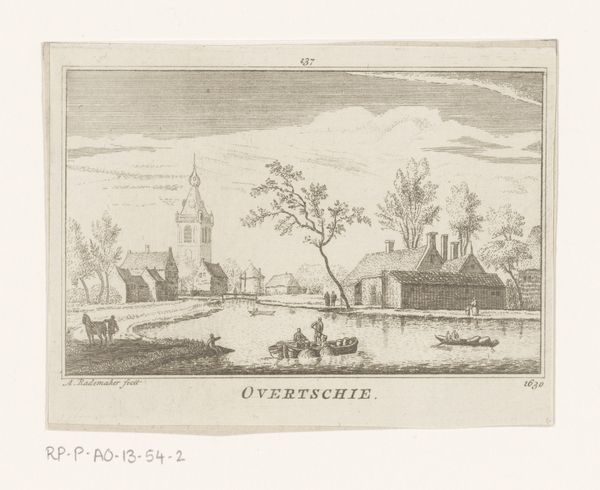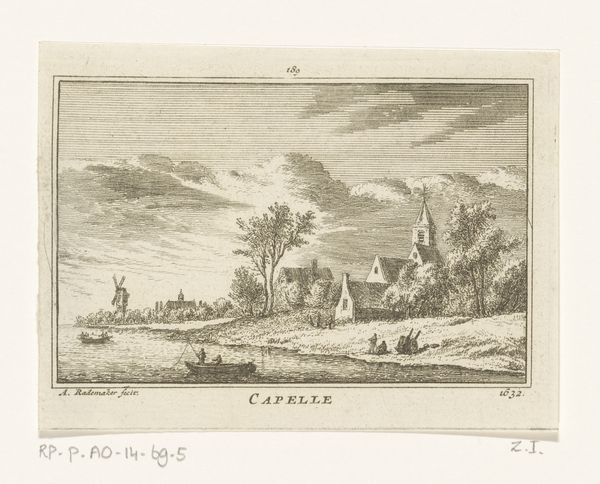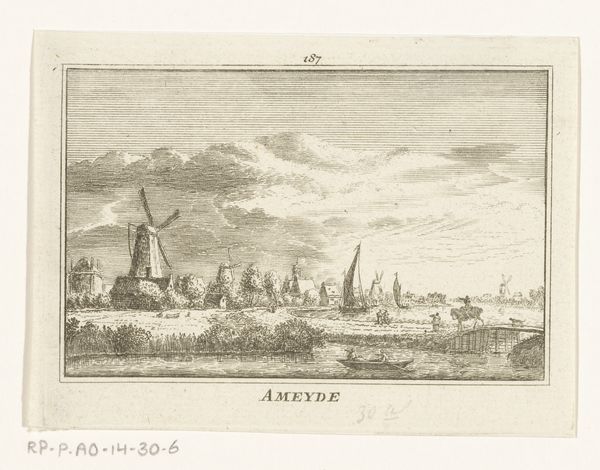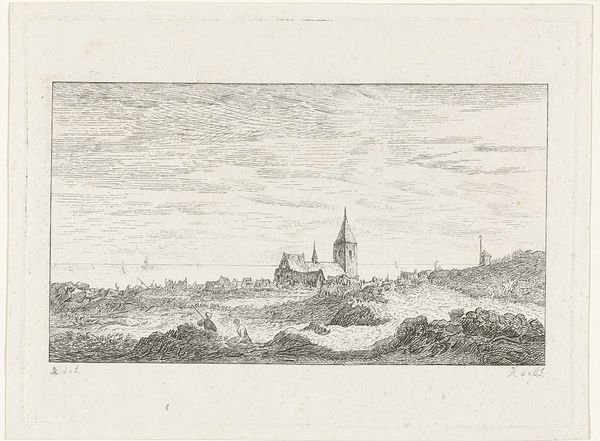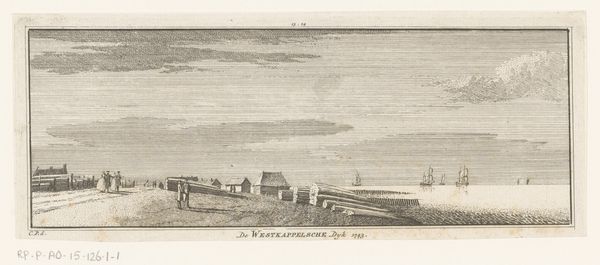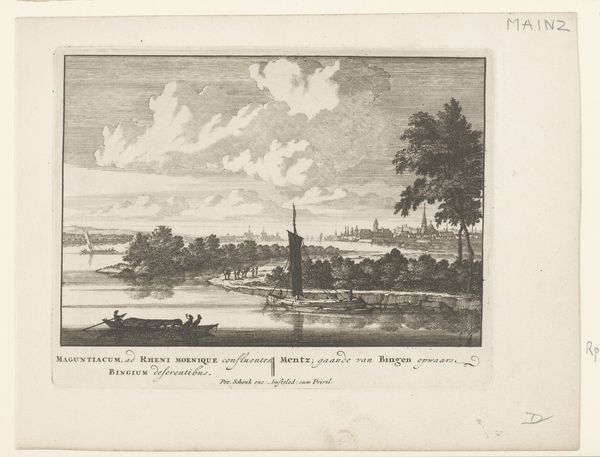
print, engraving
#
baroque
#
dutch-golden-age
# print
#
old engraving style
#
landscape
#
cityscape
#
engraving
Dimensions: height 80 mm, width 115 mm
Copyright: Rijks Museum: Open Domain
Curator: This work, held at the Rijksmuseum, offers a glimpse of Scheveningen and the North Sea. The engraver Abraham Rademaker created this around 1727-1733. Editor: It feels like a scene frozen in time. A sense of stillness pervades despite the suggestion of movement with the figures and the carriage, almost like an old photograph fading at the edges. Curator: Indeed. Rademaker’s landscapes and cityscapes were incredibly popular. This view encapsulates the spirit of the Dutch Golden Age, showcasing not only the topographical accuracy, but also offering an ideal vision of the time. Think about the burgeoning mercantile class who commissioned these images for display in their homes, as affirmations of their civic identity. Editor: The stark black-and-white creates a particular psychological space. I am curious about the compositional elements; the tiny human figures and the large sky make me reflect on how small one is amidst a larger world. Curator: These elements tap into longstanding cultural understandings about our relation to the natural world. Scheveningen was then, as it is now, a place of transition and trade. These coastal views, these Dutch vedute, held a symbolic place in cultural and commercial exchanges of that era. Note how Rademaker plays with the perspective—leading your eye both toward the sea and also towards the main structure of what is most likely the village church. Editor: And what do you think the choice of engraving accomplishes, compared to, say, painting? The texture gives it such a tactile quality, although it's rendered in such miniature detail. It creates distance as it invites touch. Curator: Printmaking was critical in disseminating ideas during this era. Engravings made the images portable, affordable, and reproducible, impacting wider social imaginaries regarding city life, work, and leisure. It reflects the growing visual culture. Editor: It’s fascinating how a simple scene, etched onto a copper plate, tells such an encompassing story. The cultural, the psychological—it's all interwoven here. Curator: Precisely. Rademaker offers not just a depiction, but a symbol—a moment captured within the complex visual, economic, and social networks that define a historical era.
Comments
No comments
Be the first to comment and join the conversation on the ultimate creative platform.

